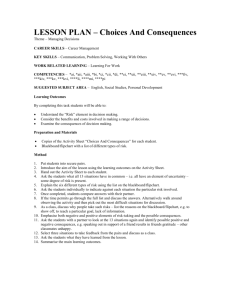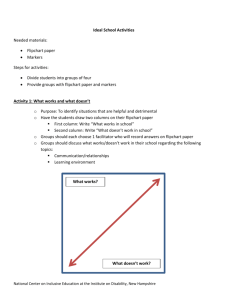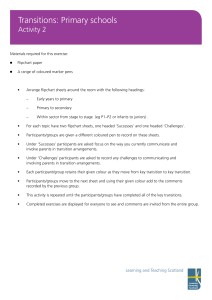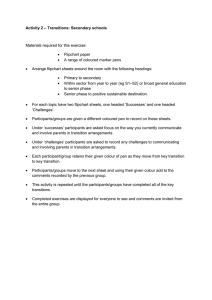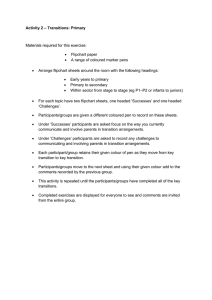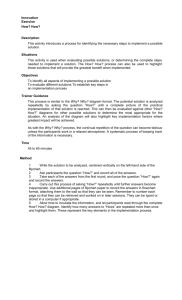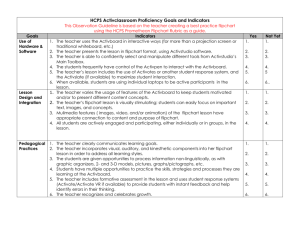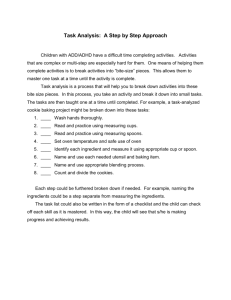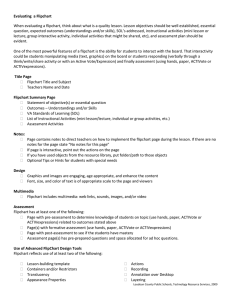Hot Math - Educ325Fall2010
advertisement
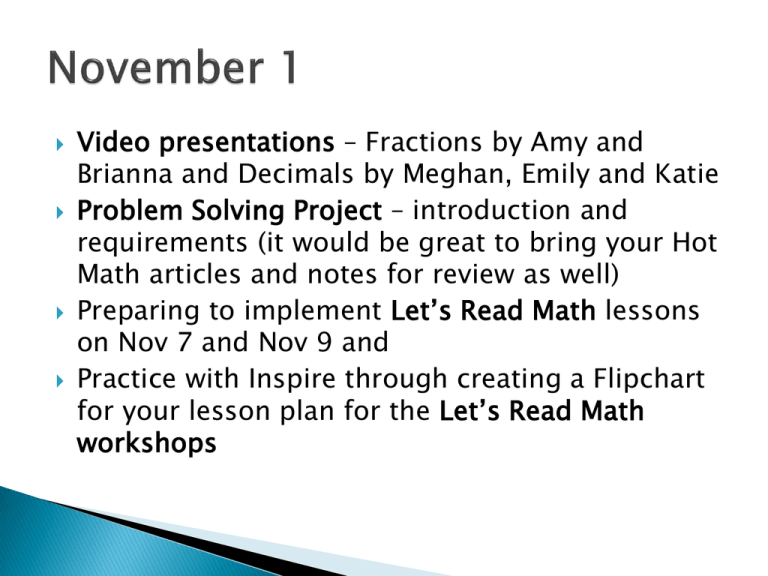
Video presentations – Fractions by Amy and Brianna and Decimals by Meghan, Emily and Katie Problem Solving Project – introduction and requirements (it would be great to bring your Hot Math articles and notes for review as well) Preparing to implement Let’s Read Math lessons on Nov 7 and Nov 9 and Practice with Inspire through creating a Flipchart for your lesson plan for the Let’s Read Math workshops Hot Math is based on explicit instruction to help students recognize novel problems as belonging to a problem type for which they have learned a solution method. The teacher begins by discussing the underlying meaning of the problem and having students roleplay the problem. Next, the teacher shows a problem that has already been solved and explains how and why the solution strategy works. Students then team up in pairs to apply those strategies to solve problems that fit that same type, while explaining their work to each other. At the end of the class, students independently take on a new problem of the same type and score their own work against a rubric. Even if they don’t get the problem totally correct, they receive credit for using good strategies. As the lessons move forward, students keep track of their own progress, with the goal of trying to get “hot” at math. Specific Problem Types and Teaching for Transfer Lesson Structure – key problem features of problems and strategies Self Regulation through Goal Setting and Self-Monitoring The first 3-week unit is dedicated to basic problem-solving information: making sure answers make sense, lining up numbers from text correctly to perform math operations, and labeling work with words and mathematics signs. HOT Math Procedures: Sessions 1-4: Teaching the problem strategy, checking their work, and graphing their progress Sessions 5-6, Teaching for transfer Creating flipcharts to teach students to identify problem type and then use a problem solving strategy to figure out the solution to the problems. There should be a flipchart for each session. Six Sessions – Two Per week, Nov 15, 29 and Dec 6 Sessions 1-3 Sessions 4-5 Session 6 ◦ Teaching and practicing using problem solving strategy to solve practice problems ◦ Introducing and practicing self-monitoring procedures ◦ Students work in small groups to pose their own problems and then demonstrate how to use of the problem solving strategy to solve the problem. Students might write a script and create a storyboard or they might create a PowerPoint presentation or flipchart to pose their problem and then to share their solution ◦ Students present their problems to one another, solve one another’s problems, and watch the problem solution video or flipchart score the final, independent problem of each session using an answer key graph these daily scores on their personal thermometer chart or other tool you design inspect their charts and set a goal score their homework report to the class examples keep track on a class graph

